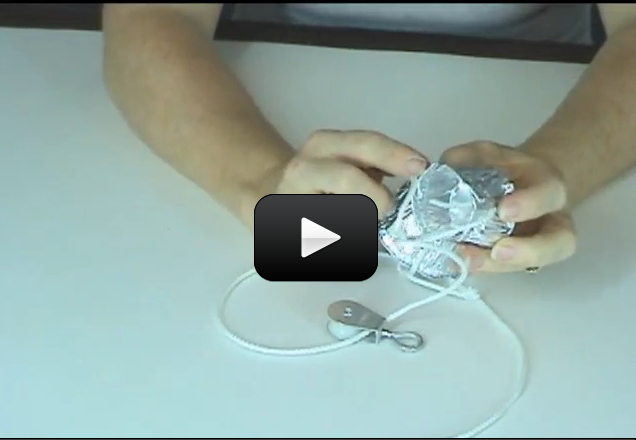Are you curious about pulleys? This set of experiments will give you a good taste of what pulleys are, how to thread them up, and how you can use them to lift heavy things.
We'll also learn how to take data with our setup and set the stage for doing the ultra-cool Pulley Lift experiments.
Are you ready? Please login or register to read the rest of this content.
We'll also learn how to take data with our setup and set the stage for doing the ultra-cool Pulley Lift experiments.
Are you ready? Please login or register to read the rest of this content.


Can you use marbles in one cup in pennies in the other?
i have done this experiment with my brothers and sisters and with large pulleys and it worked fine
You’re going to laugh, because the pulleys I used in the video are from a chicken coup! The kind from the hardware store should work, as will some shower curtain pulleys if they are strong enough.
We had quite a bit of problems with this experiment. Mainly with the string not staying in the groove of the pulley and the friction of the system being outrageously large. Where did you get the pulleys in your video and have you done this experiment with fishing line. The pulleys I purchased looked like fishing line would get wedged in the space between the pulley and the metal holder.
Thank you. We’ll get this figured out. The kids are excited about e-science camp and are really looking forward to it after wrapping this unit up.
If you use a single-strand (like fishing line) or a braided line (like clothesline or nylon) that can help. I am sorry you are having trouble, but remember, use this as a way to keeping the kids learning that science is something like this! 🙂
Now we are having problems with the string twisting. Is there a particular kind of string that is less likely to twist?
Great job! Remember, kids are learning all the time, and by encouraging them to look at their results and redoing the experiment, you’re also teaching them about resilience and observation, two important qualities real scientists must have. 🙂
Going to have the kids try again tomorrow. After reading your comment and watching the video again, I think it may have been a combination of mixing up the lift and load buckets along with poor quality string that had a bit of stretch to it. I’ll send you a photo if the kids continue having issues. Thanks!
Hmmm…. that sounds suspicious. My guess is that you have something strung up backwards, or are putting the weight on the wrong point. Can you send me a photo of your experiment?
The kids used good pulleys from the hardware store by the way.
I’m not sure why the kids got the results they did. It makes no sense to me. For example, it took 26 pennies to lift 15 for the single pulley. It took 51 to lift 15 on the double pulley, and it took 85 to lift 15 on the triple. ?????? Any suggestions, thoughts, comments on what possibly went wrong here?
Excellent! You’ve just mastered the main concepts that I teach my 2nd year engineering students…. 🙂
Hi Aurora!
I learned that you have to trade force for distance. Like when you have the double pulley you have to pull it further for it to be easier. Like the see-saw too. It is easier to lift it when the fulcrum is nearer to the load.
Dayini (12) 🙂
That looks great! What did you learn?
Hi Aurora!
For the single pulley:
It took 64 coins to lift the load (40 coins)
For the double pulley:
It took 49 coins to lift the load (40 coins)
Does this look correct to you?
Thank you!
-Dayini (12) 🙂
I am sorry you had trouble – are there any suggesting you’d recommend?
This was difficult because we had to cut the string every 2 minutes.It was frustrating for me because we could not get the rope in the cup we tried and tried but,it would not go it took us about 25 minutes to get done. We had to watch your video over and over and go back to the beginning!Then we finaly got it after it took us about 10 minutes for the sencond pulley system!!!!!!!!!!!!!!!!!!!!!!!!!!!!!!!!!!!!!!!!!!!!!!!!!!!!!!!!!!!!!!!!!!!!!!!!!!!!!!!!!!!!!!!